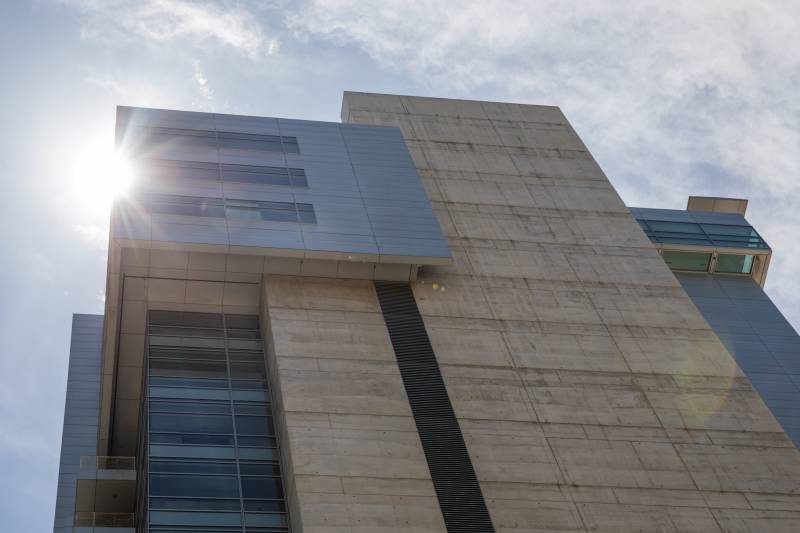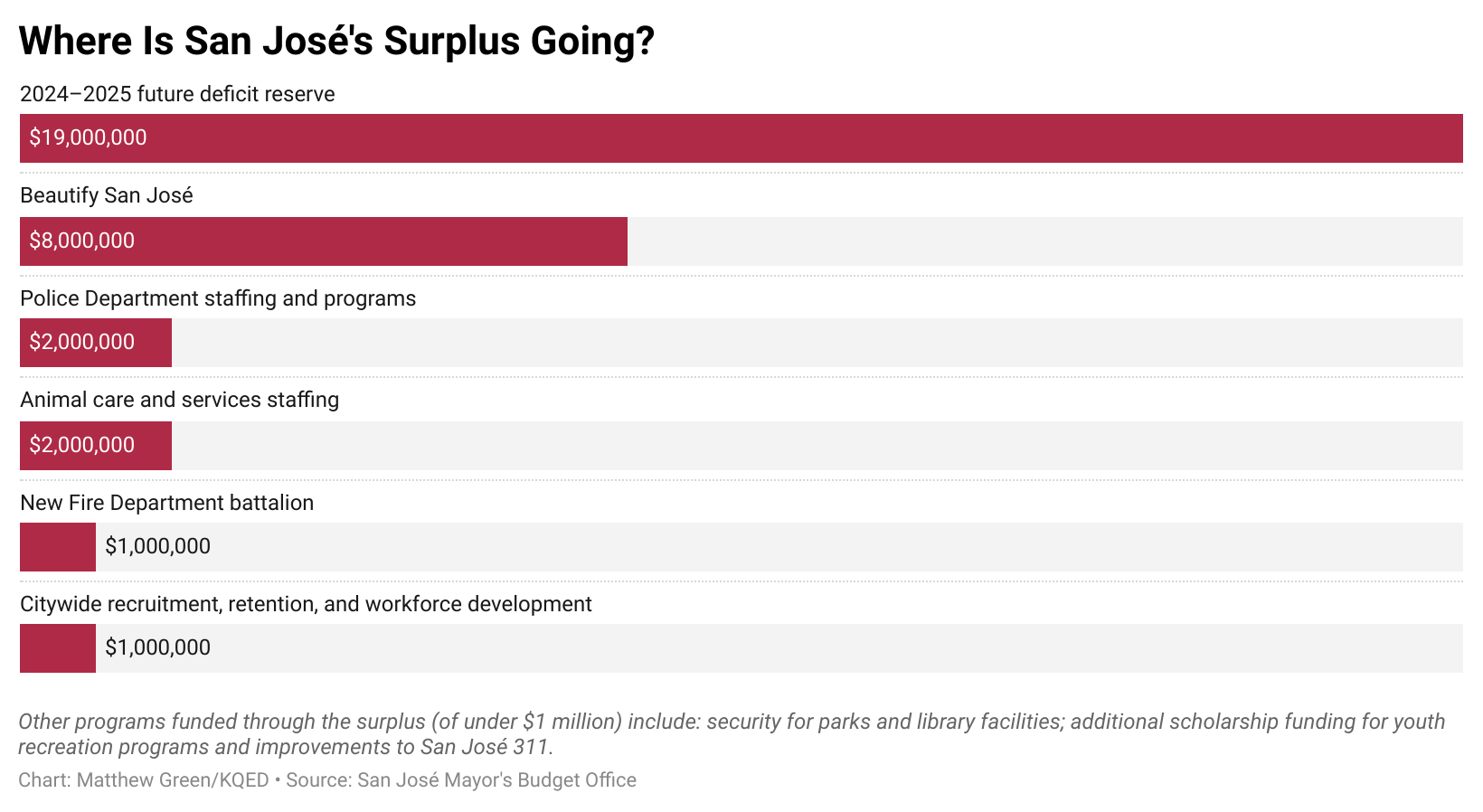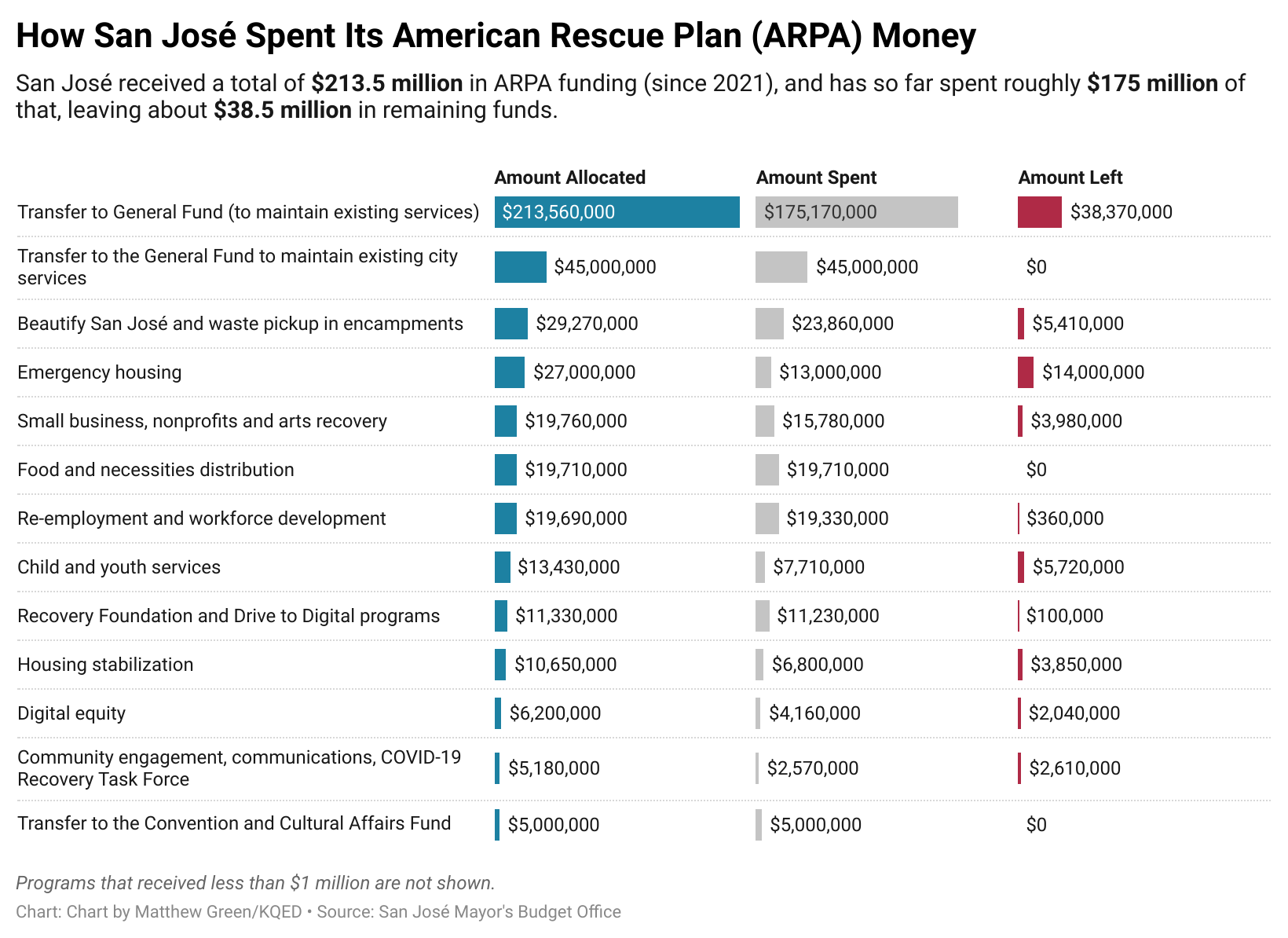After three years of economic growth and historic federal pandemic relief, local budgets in the Bay Area are looking a little different this year. Much of that federal aid has been spent, and cities are grappling with the economic fallout of turmoil in Silicon Valley and changing commuter habits. Elected officials often say that budgets are “statements of values.” So KQED is checking the receipts of the spending plans recently passed in San Francisco, San José and Oakland to see how leaders in the region’s three largest cities are prioritizing taxpayer dollars.
In June, when San José’s City Council passed its budget for the 2023–24 fiscal year, debate largely centered on how the city should spend $87 million in earmarked funds left over from previous years to reduce homelessness.
Mayor Matt Mahan led a controversial push to prioritize funding temporary shelter, while other Council members urged a continued focus on paying for more permanent affordable housing. The compromise reached will shift a quarter of the unspent money toward temporary housing.
Elsewhere in the budget, the Council broadly agreed on increasing police staffing and setting aside the city’s modest budget surplus to deal with potential shortfalls in future years.

Unlike San Francisco and Oakland — which have both suffered from a steep decline in downtown commuters — San José is less reliant on a surge in daytime population, helping to land the city in a projected budget surplus of $35.2 million for the fiscal year beginning July 1.
In its proposed operating budget, the city manager’s office wrote that “key economic areas remain strong, including robust employment figures, rebounding hotel occupancy and room rates, and growing sales tax activity levels.”
Mahan said the city’s diversified economy also helped shield the budget from the fallout of tech layoffs that began surging at the end of 2022.
“Almost one in five jobs in the city are in manufacturing, so when you see these big top-line layoff numbers, they aren’t actually impacting San José as much,” Mahan told KQED. “We’re also a very residential-heavy city, which gives you a bit more stability in terms of revenues.”
The city is not planning a spending spree with its $35 million surplus. Again, in the grand scheme of things, it’s a pretty modest windfall — just 2% of the entire general fund — and city leaders are opting to use it conservatively, putting the majority of it, $19 million, into a reserve to prepare for an anticipated $18.8 million deficit next fiscal year (more on that below).
“We are setting dollars aside, and have consistently, in rainy day funds,” Mahan said. “We have not overextended ourselves.”
The next largest surplus expenditure, $8 million, is for the BeautifySJ program. That initiative, launched in 2017, funds neighborhood clean-ups and staffing to respond to graffiti and illegal dumping complaints.
San José budget officials aren’t expecting the good times to last for long. The City Manager’s office is projecting this year’s surplus to be followed by a $18.8 million deficit next year, followed by roughly balanced books in the fiscal year beginning in July of 2025.
The current projections, according to the city’s operating budget document, are “built on the assumption of a moderate recession beginning in summer 2023, which impacts several economically sensitive categories.”
Clearly, things can (and have) changed. Despite a long-feared recession, the national and local economy has continued to motor along. On the flip side, the city’s ongoing labor tensions with its largest employee unions could add some unforeseen costs in future budgets. Unlike the federal government, cities and states are not allowed to pass budgets with deficits, so if San José faces a shortfall, the books will need to be balanced with cuts or taxes — or as bureaucrats lovingly refer to them: savings and revenues.
To address economic uncertainty during the pandemic, San José city services were bolstered by an unprecedented level of aid from the federal government — most notably, the American Rescue Plan Act, signed by President Joe Biden in March of 2021, which delivered some $213 million to the city.
For the last two years, those funds have allowed the city to maintain its staff, while expanding waste pickup, rental assistance, housing for people experiencing homelessness and food distribution.



